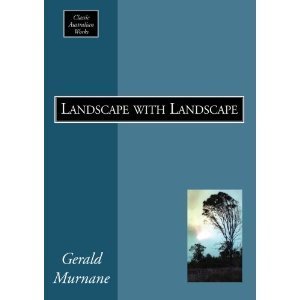What do you think?
Rate this book


267 pages, Paperback
First published January 1, 1987
I despaired of writing publishable fiction because as soon as I began a story or a novel I lost sight of my subject and wrote page after page trying to explain what was wrong with me as a writer, which was that I hardly noticed people and things around me because I was always looking for some kind of ideal scenery that would correspond to obscure places in my thoughts.Many authors have taken a word and made it their own. With Murnane that word is “landscape:”
The moment that changed my life was when I muttered a solemn phrase that had suddenly become rich with meaning. I said the words ‘literary landscape’ as though I was naming my lost homeland, announcing a destination I was about to make for, and explaining the oddness that others seemed to see about me.This is a deep book; don’t let its mundanity con you. As always with Murnane it feels as if he’s just droning on and on and, yes, he can drone with the best of them but really his problem stems from the fact he can’t find a way to boil what he has to say down into tasty sound bites. Just think about a landscape you’re familiar with—any landscape with do, even your back garden—and try to do it justice in words. Murnane’s books are really only a single massive work trying to describe the literary landscape he’s been exploring all his life. It feels and sounds a lot like the real world but, as with Dick at his best, it’s just a little bit skewed. It’s tempting to think of Murnane’s work as autobiographical fiction and there’s no doubt he’s drawn heavily on his life but that’s because the literary landscape he inhabits inhabits him.
During most of the years before I stopped writing fiction, I would have afforded little cheer to any personage who had begged me in a dream to allow him or her into my fiction. I would have tried to explain to the personage that he or she would still be no more than a personage, even if I were to report his or her existence in my fiction. I would have tried to explain that no sort of character could be said to exist in my fiction; that anyone mentioned in my fiction could be never more than a fictional personage, even if he or she might have seemed to resemble some or another person who lived in the place often called the real world or some or another character mentioned in some or another work of fiction. In fairness to myself, however, I might have tried to explain that the state of existence of the personages in my fiction was by no means wretched; that many such personages appeared against a background of mostly level grassy countryside; and that many a personage was the object of my continual curiosity, so that I longed to be on familiar terms with the personage, even if my only means of achieving this might have been the preposterous project of my becoming myself a personage in my own fiction.I struggled with that the first time I read it. Now it’s beginning to make some sense. I should read the book again and I likely will but not for a while. If there’s one thing I’ve learned about Murnane is to give his writing space.
Reader, if you’re urged
to learn more about this imagined world,
outlive me and my siblings and visit the library
where my archives end up. You’ll find there a filing
cabinet full of the sort of detail
that I wanted to include in this poem but failed.
You’ll read thousands of pages, though you’ll never see,
unfortunately, what they revealed to me.
"my writing is meant to fill. The only writers I know are those whose photos I see each week in the book review pages of Time. I envy most the men who pose against trunks or branches of trees, patches of unkempt grass, or corners of old buildings. I assume that these photos are the same ones that appear on the dust-jackets of the men's books. I imagine this or that photo facing me on the rear cover of a novel or a collection of poems. I see the author standing easily in the foreground of the landscape he has chosen to define himself. I postulate the existence some· where in the depths of that landscape of a horizon too fine for my eyes to make out, the horizon between the end of that landscape ad the beginning of the landscape which is the equivalent of the contents of the book. Last of al, I speculate about the subtlest of all horizons. This quite imperceptible boundary would mark, if anyone saw it, the beginning of the furthest of all landscapes, the place that the writer once looked at in the days before he composed his book. And although I read about these writers and their books, and dream of becoming such a writer myself, I do not read their books"